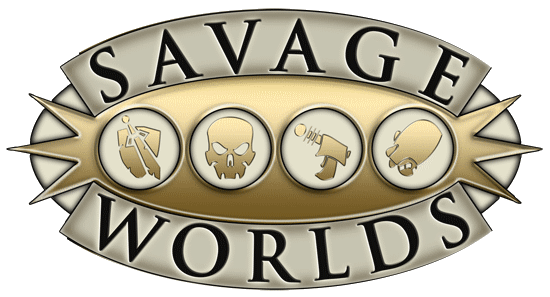Savage Worlds


Savage Worlds is a universal role-playing game system published by Pinnacle Entertainment Group. The purpose of the system is to provide a unified mechanic for fast-paced game play and a relative lack of preparation compared to most other systems at the expense of realism. This is in direct contrast to games such as GURPS, which focus on detail and simulationism. The current version of the game is the Explorer's Edition, which costs about $10.
A quickstart version of the rules is available for free. The Savage Worlds community is well known for it's abundance of free material as well as setting and system conversions.
The System (section is copy/pasted from Wikipedia)
Character Creation
Player characters are built using a point allocation system, though game masters are encouraged to design non-player characters to the needs of the game rather than to fit the system. Characters in Savage Worlds are composed of a variety of statistics. These include Race, Traits, Edges, Hindrances and sometimes Powers.
A character's race usually refers to his or her species, though in some settings (such as the Pirates RPG) this may instead refer to nationality. In cases of the former, modifiers to other characteristics may apply; in cases of the latter, they typically do not.
A character's traits are characteristics that are rated by a single polyhedral die. The more sides the trait is rated in, the better the character is at the trait. So a character with a Strength trait of a ten-sided die (d10) is stronger than a character whose Strength trait is rated with a six-sided die (d6). Traits are divided into attributes, which are inherent and skills, which are learned. The five attributes used in Savage Worlds are Agility, Smarts, Spirit, Strength and Vigor. Some examples of skills in Savage Worlds include Fighting, Healing and Stealth.
Characters are also customized with advantages and disadvantages known as Edges and Hindrances. Edges and Hindrances, unlike Traits, are not rated with dice.
In addition to Traits, Edges and Hindrances, a character has the following derived statistics: Pace (ground speed), Parry (the ability to defend one's self), Toughness (resistance to damage) and Charisma (presence and charm). Some setting supplements add a fifth derived statistic such as Reason, Sanity or Grit.
Task resolution
Dice are rolled to determine the outcome of character actions and interactions in the game. Usually a trait die is rolled against a target number of four. If the roll equals or exceeds the target number, the action succeeds; otherwise it fails.
If a player rolls the highest number possible on a given die (such as an 8 on an eight-sided die), the die may be re-rolled and its result added to the initial roll. This is known as "Acing". A die may continue to Ace as long as the highest die number is rolled.
Player characters and significant non-player characters are known as "Wild Cards". Wild Cards get to roll a second die, known as a "Wild Die", alongside their trait rolls. This roll may Ace as normal. The player of the Wild Card uses the higher of the two rolls (trait die or Wild Die) to determine the actual result of the roll.
Combat initiative is determined by a standard deck of playing cards (with two jokers); characters act in sequence according to the fall of the cards from highest to lowest. Ties are broken by suit (in order from best to worst, spades, hearts, diamonds, clubs). Jokers beat all other cards and additionally give bonuses on rolls made in the round one receives them. The deck is shuffled at the end of every round in which a joker was dealt.